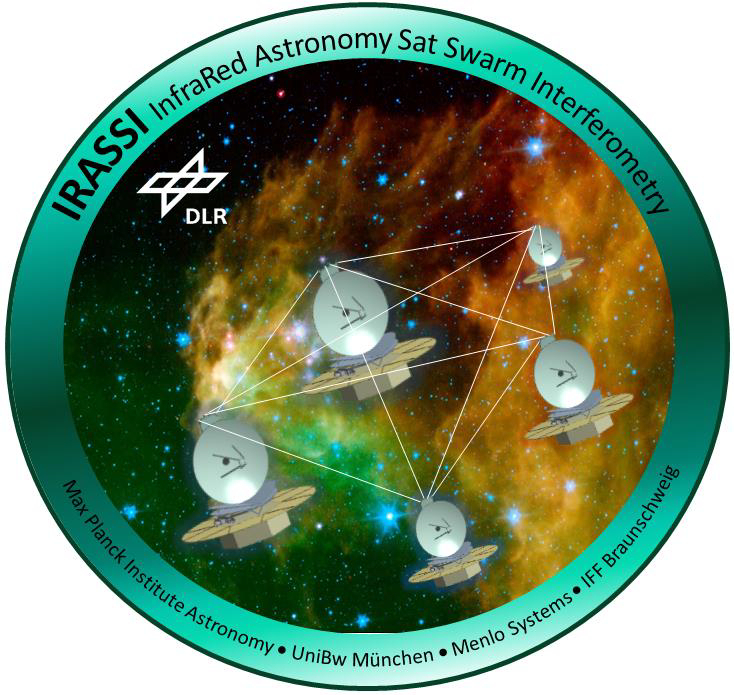| EPoS Contribution |
|
Far-Infrared Heterodyne Interferometry: What Can It Give Us? Can It Be Done?
Hendrik Linz MPIA, Heidelberg, DE | |
| The far-infrared (FIR) regime is one of the few wavelength ranges where no astronomical data with sub-arcsecond spatial resolution exist yet. Also medium-term satellite projects like SPICA, Millimetron or OST will not resolve this malady. For many research areas, however, information at high spatial AND spectral resolution in the FIR, taken from atomic fine-structure lines, from highly excited CO and especially from water lines would open the door for transformative science. These demands call for interferometric concepts. We present here first results of our feasibility study IRASSI for an FIR space interferometer. It features heterodyne interferometry within a swarm of 5 satellite elements. The satellites can drift in and out within a range of several hundred meters, thereby achieving spatial resolutions of <0.1 arcsec over the whole frequency range of 1-6 THz. Precise knowledge on the baselines shall be ensured by metrology employing laser frequency combs, for which first ground-based tests have been designed by members of our study team. In this contribution, we show how basic science requirements translated into operational and design parameters for IRASSI. Our consortium has put much emphasis on the navigational aspects of such a free-flying swarm of satellites operating in relatively close vicinity. We discuss how data-rate issues can be solved by adopting on-board correlation, and give first approximations for the expected uv-coverage and synthesized beams. Though this may seem as a project for the far future, we have to start now to work on concepts for such a great enterprise. IRASSI shows that many problems, thought to be show-stoppers in the past, can be successfully tackled. | |
 | |
| Caption: Concept view of the 5-element swarm currently envisaged in the IRASSI study. | |
| Collaborators: O. Krause, MPIA, DE L. Buinhas, UBW, DE E. Ferrer, UBW, DE R. Foerstner, UBW, DE B. Eissfeller, UBW, DE M. Lezius, Menlo Systems, DE |
Key publication
Suggested Session: Protostellar disks |

